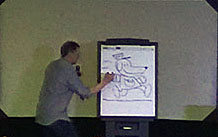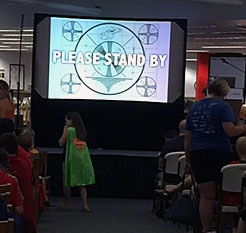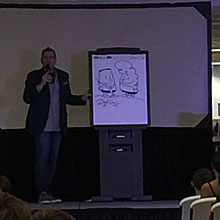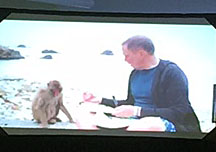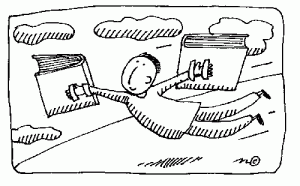TRA-LA-LAAAA!
How does an evening with children’s author Dav Pilkey begin? (well,after waiting in a looooong line wrapping all the way around Headquarters library…)
With, of course, a loud “Tra-la-laaaa!” yelled in unison by all the kids (and many of the parents) in the audience. It’s Captain Underpants’ typical call to action.
I had the fun opportunity to be part of this attentive and rambunctious crowd last night at the St. Louis County Library’s Author Event, celebrating the release of CAPTAIN UNDERPANTS AND THE SENSATIONAL SAGA OF SIR STINKS-A-LOT. (# 12 in the series)
MAKING READING FUN
Dav Pilkey, who will have 60 books to his credit with 2016’s THE ADVENTURES OF DOG MAN, has revolutionized reading for boys especially. USA Today called him the “savior of the reluctant reader.” His short, graphic chapter books with their silliness, fast pace, and bathroom humor are a perfect fit for young readers. The kid-friendly author creates his tales based on his own elementary school experiences.
As a child who suffered from ADHD and dyslexia, he understood the power of pictures to tell a story. Even though he often found himself doing hallway detention for drawing in class, he couldn’t resist making more clever comics—to the delight of his fellow students and the dismay of his teachers.
“Underwear is not funny!” said Mr. Pilkey’s second grade teacher. “Grow up!” she cautioned him. “You can’t spend the rest of your life making silly books!”
Oh, how little she knew, and how very far Mr. Pilkey has enriched young readers with the delights of his underwear crew.
Some of his other titles include:
Dog Breath
Paper Boy
The Adventures of Ook and Gluk
Super Diaper Baby
Dogzilla!
Nowadays, the author prefers drawing in more natural spots, like along the beach in Japan when visiting his wife’s family. But even there, he still suffers criticism—from some monkeys that is. Mr. Pilkey shared a video of himself at work sketching, while several monkeys attempted to confiscate his pens and offer vocal commentary on his work-in-progress.
HANG IN THERE!
At the end of his presentation last night, Mr. Pilkey made a point about perseverance. He showed a picture of a scowling egg and a happy potato in boiling water. “Don’t let adversities overcome you,” he said. “Rather use them to build on. In boiling water, a potato softens but an egg becomes hard.”
READING POWER
Many young readers in the crowd wore red capes, similar to Captain Underpants. On back of the capes was the message, “Reading is Power!” Thanks, Mr. Pilkey, for enhancing children’s literature with your comic characters and delightful illustrations and proving that strong reading muscles really do rock!


